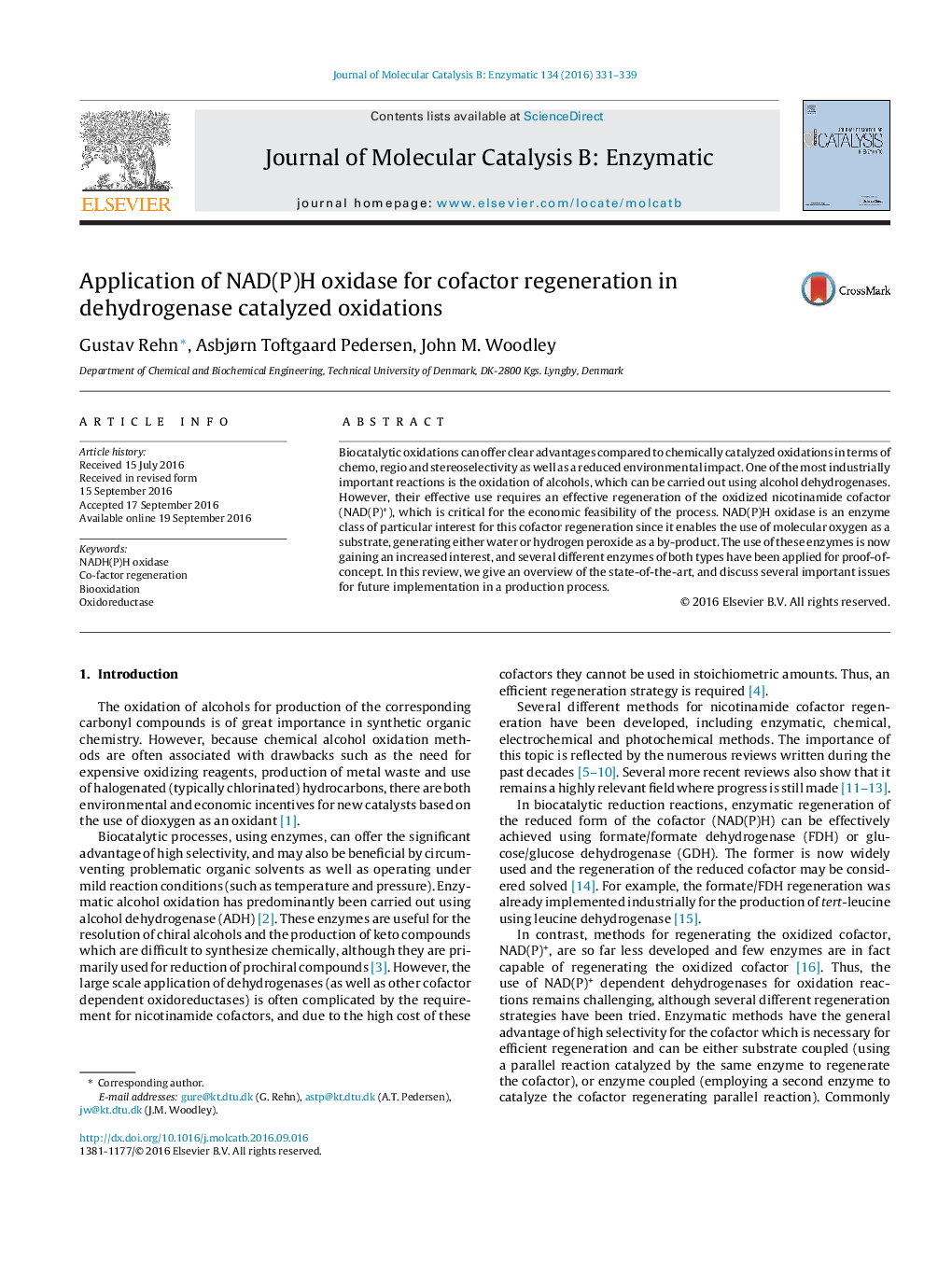| Article ID | Journal | Published Year | Pages | File Type |
|---|---|---|---|---|
| 6456515 | Journal of Molecular Catalysis B: Enzymatic | 2016 | 9 Pages |
â¢A review of the state-of-the-art for co-factor regeneration using NAD(P)H oxidases.â¢Discussion of challenges for process implementation.â¢Outlook on future and related development in the field.
Biocatalytic oxidations can offer clear advantages compared to chemically catalyzed oxidations in terms of chemo, regio and stereoselectivity as well as a reduced environmental impact. One of the most industrially important reactions is the oxidation of alcohols, which can be carried out using alcohol dehydrogenases. However, their effective use requires an effective regeneration of the oxidized nicotinamide cofactor (NAD(P)+), which is critical for the economic feasibility of the process. NAD(P)H oxidase is an enzyme class of particular interest for this cofactor regeneration since it enables the use of molecular oxygen as a substrate, generating either water or hydrogen peroxide as a by-product. The use of these enzymes is now gaining an increased interest, and several different enzymes of both types have been applied for proof-of-concept. In this review, we give an overview of the state-of-the-art, and discuss several important issues for future implementation in a production process.
Graphical abstractDownload high-res image (97KB)Download full-size image
